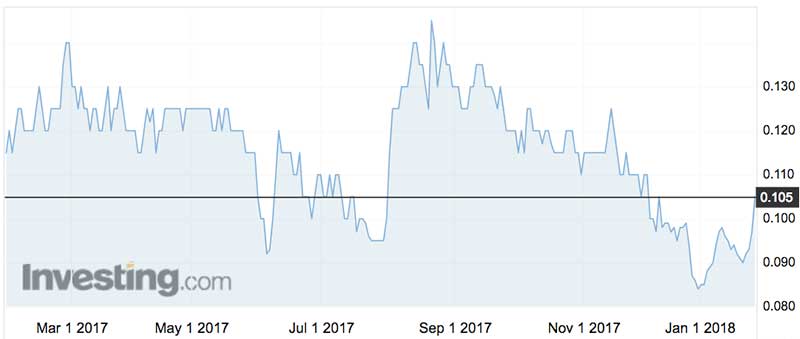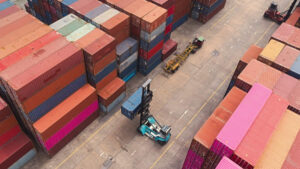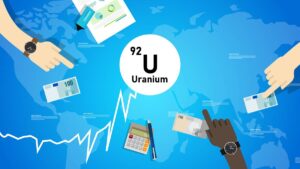Investors toast rare earths as electric cars drive ‘magnet metals’ demand

Pic: Bloomberg Creative / Bloomberg Creative Photos via Getty Images
Rare earths prices are rebounding — and demand is expected to grow as electric car sales gains pace.
While most investors closely watch “battery metals” such as lithium, cobalt and graphite used in electric car batteries, attention is turning to rare earth “magnet metals” such as dysprosium, neodymium and praseodymium used in electric car motors.
“With the electric vehicle evolution upon us there’s just simply a need for more rare earths in the electric vehicle application,” Northern Minerals (ASX:NTU) managing director George Bauk told Stockhead.
“We believe that we will see a strengthening in the rare earths prices in the near future.”
Northern Minerals expects to start shipping dysprosium from its Browns Range project in Western Australia in the September quarter.
Dysprosium is an additive used in the permanent magnets required for the motors in electric vehicles and wind turbines. The heavy rare earth allows the magnet to retain its charge at a higher temperature.
Each electric vehicle contains roughly 100 grams of dysprosium.
Bloomberg New Energy Finance estimates electric cars will account for 2 per cent of the market by 2020, rising to 8 per cent by 2025 and 20 per cent by 2030.
“That doesn’t take away from other applications that rare earths are in, but that single application is going to be a real driver of demand,” Mr Bauk says.
- Bookmark this link for small cap breaking news
- Discuss small cap news in our Facebook group
- Follow us on Facebook or Twitter
- Subscribe to our daily newsletter
Rare earths are a group of 17 elements with “unique catalytic, metallurgical, nuclear, electrical, magnetic and luminescent properties”, according to the federal government’s Australian Mines Atlas.
Excess global supply — China produces about 80 per cent of rare earths — caused prices for many rare-earth compounds and metals to decline between 2012 and 2016.
But the price of neodymium and praseodymium soared last year.
Dysprosium is now fetching around $US185 a kilo and magnet producers predict the commodity could reach a peak of up to $US1500 a kilo.
Northern Minerals is due to complete the construction of its 60,000 tonne per annum pilot plant by the end of June.

Rare earths heavyweight Lynas Corporation (ASX:LYC) told investors last week that demand for rare earths in all markets remained strong.
Although prices fell late last year, they have since recovered and are now at about the same level as in March 2017.
Lynas reported record cash flows and an improved balance sheet for the December quarter.
“They’re showing quarter upon quarter of record cash flow, record profit, strengthening of the balance sheet and that’s really important for us because that demonstrates to the market that rare earth companies are actually a potential profitable venture,” Mr Bauk said.
Junior ASX-listed explorer Arafura Resources (ASX:ARU), meanwhile, noted earlier in January that neodymium-praseodymium oxide prices had improved by 24 per cent in the past month to $US53.75 a kilo.
Neodymium-praseodymium is the main product Arafura plans to produce from its Nolans project in the Northern Territory.
The compound is used in the manufacture of the magnets that are used in the automotive industry for electric components such as seats, mirrors, wipers, steering and braking, as well as the actual motor.
While traditional petrol or diesel combustion engine motor vehicles each use about 700 grams of neodymium-praseodymium oxide, electric or hybrid vehicles require an extra 1 kilo.
Demand for neodymium-praseodymium oxide is expected to grow at 8 per cent each year to 2025 from the current global consumption of 33,340 tonnes.
Establishing Australia as a key source
“It’s important for us that we can demonstrate to the market a new supply of rare earths outside of China and we believe that security of supply will grow demand,” Mr Bauk told Stockhead.
“Like anything, when people can feel confident that they can get access to that particular material then that will give them more confidence to use more of it rather than look at thrifting or using alternatives.”
China’s crackdown on its polluting and illegal mining operations will also serve to benefit Australian rare earths producers.
“All of the heavy rare earths come from China at present,” Mr Bauk said. “That’s another factor that’s going to affect pricing because once you start seeing a change in the practices of the mining activities, which will undoubtedly include an increase in their operating costs then that will put pressure on their profitability and therefore increase the price.”
UNLOCK INSIGHTS
Discover the untold stories of emerging ASX stocks.
Daily news and expert analysis, it's free to subscribe.
By proceeding, you confirm you understand that we handle personal information in accordance with our Privacy Policy.








